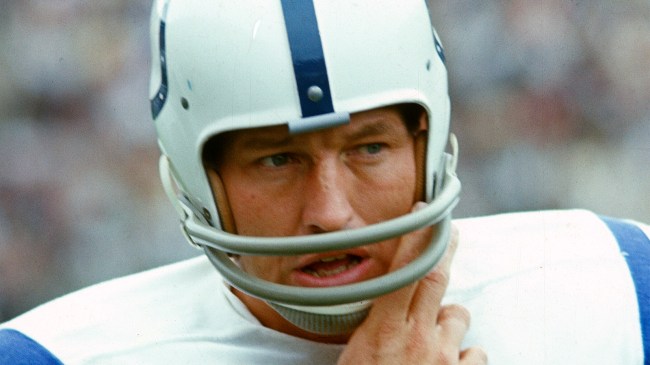
Getty Image
Virtually every person who’s familiar with the path that brought Michael Jordan to the NBA is aware he was cut from his varsity team, and while the actual story is a little bit more complex, it’s still served as a popular example of the importance of perseverance and following your dreams.
His Airness is far from the only person who was able to overcome a similar setback, as other notable names including Lionel Messi, Carmelo Anthony, and Orel Hershiser managed to bounce back after failing to secure a roster spot at some point before embarking on some pretty successful careers.
The NFL also features a number of origins stories involving players who initially failed to make much of a mark at training camp prior to proving they had what it took to hold their own in the league.
For example, Kurt Warner famously bagged groceries to support himself after the Packers sent him packing in 1994, and James Harrison was cut four different times by the Steelers and the Ravens before finding a home in Pittsburgh en route to becoming one of the NFL’s most formidable linebackers.
While the Steelers didn’t pay the price for their initial misstep with Harrison, the same can’t be said for another decision that saw them part ways with a man who eventually went down in history as one of the best quarterbacks to ever step onto the gridiron.
The Steelers probably regret cutting Johnny Unitas after drafting him

Getty Image
NFL fans know the Patriots got quite a steal when they drafted Tom Brady (who arguably surpassed Unitas to become the G.OA.T.) in the sixth round of the 2000 NFL Draft, but the QB who graduated from Louisville in 1955 slipped all the way to the ninth round before the Steelers scooped him up with the 102nd overall pick.
While Unitas had made a mark with the Cardinals, he’d been plagued by injuries during his senior year, although his supposed lack of the almighty Football IQ was supposedly the primary reason Steelers head coach Walt Kiesling opted to cut him before the season got underway due to his belief the QB simply didn’t have what it took to play in the NFL.
Unitas opted to remain in Pittsburgh, where he worked in construction while playing for a local semi-pro team called the Bloomfield Rams that paid him a grand total of $6 per game (the modern equivalent of around $70).
In 1956, one of his teammates scored a workout with the Baltimore Colts, who invited Unitas (who had also landed on the radar of the Cleveland Browns) to come and show off his skills. He impressed enough to earn him a spot on the roster, and while he started the season as a backup, he stepped into the starting role after George Shaw was sidelined with a broken leg.
While it took him a few games to settle in, Unitas quickly seized control of the Colts offense and never looked back.
1957 marked his first season as a starter and Unitas led the NFL in passing yards and touchdowns. The following year, he led the Colts to their first-ever championship with an overtime win over the Giants in what was dubbed “The Greatest Game Ever Played (which marked the first of the four titles he’d eventually secure— including a victory in Super Bowl V).
When Unitas retired in 1973 after 18 seasons, he held the NFL record for the most wins as a starter (118) and most Pro Bowl appearances (10) in addition to the massive collection of hardware he managed to rack up during his hallowed tenure.
His decision to hang up his cleats may have also broken a bit of a curse the Steelers had to deal with after cutting him, as a team that never earn the right to compete for an NFL championship while Unitas was in the league won its first Super Bowl to cap off the 1974-75 campaign.